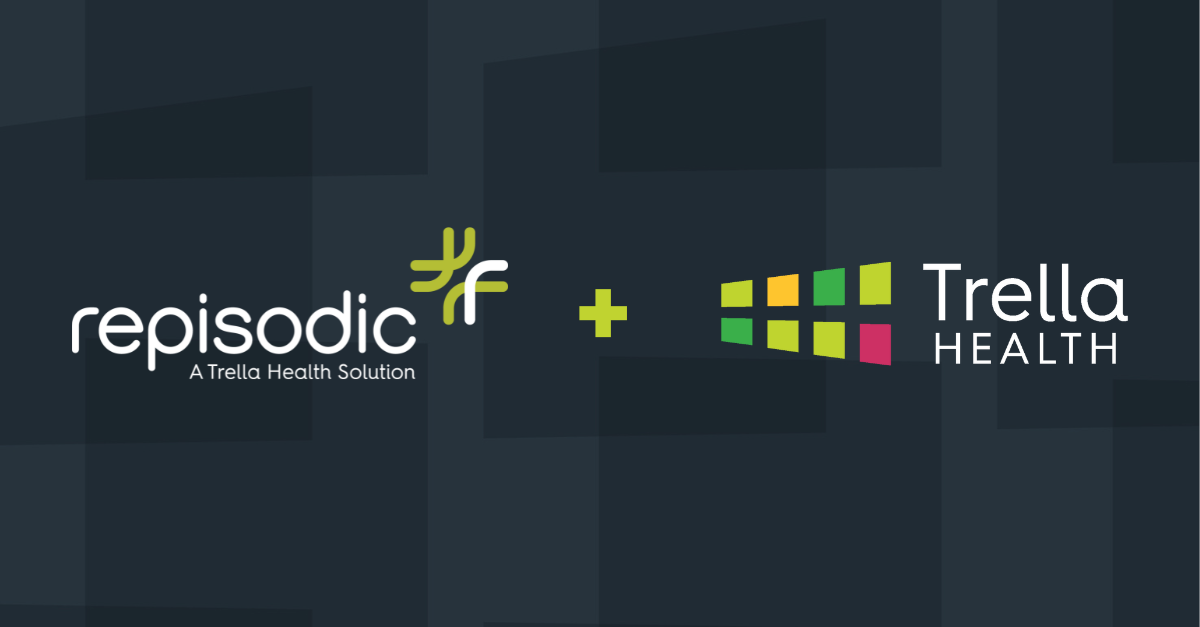The shift from fee-for-service to value-based care (VBC) is no longer a future consideration. It is the present state of healthcare. Value-based care focuses on improving health outcomes and efficiency, rather than simply changing reimbursement models. For post-acute care (PAC) organizations, this shift represents more than just a change in reimbursement models; it requires a comprehensive rethinking of operations, outcomes, and strategic positioning.
As hospitals, Accountable Care Organizations (ACOs), and payers refine their networks and raise performance expectations, post-acute providers must be prepared to demonstrate value in tangible, data-backed ways. Those who cannot do so risk being excluded from referral pathways and collaborative care models.
To succeed in this environment, PAC organizations must first understand the most pressing challenges that hinder value-based readiness. Equally important is recognizing the role that data plays in addressing each of these challenges. Below are five key barriers to VBC preparedness, and how data can equip providers to overcome them.
1. Limited Visibility into Referral Patterns and Market Dynamics in Health Care
 Many PAC providers operate with an incomplete view of their referral landscape. Without visibility into where referrals originate, how competitors are positioning themselves, and where opportunities are being lost, it becomes difficult to build or sustain meaningful relationships with upstream partners.
Many PAC providers operate with an incomplete view of their referral landscape. Without visibility into where referrals originate, how competitors are positioning themselves, and where opportunities are being lost, it becomes difficult to build or sustain meaningful relationships with upstream partners.
How Data Helps:
Access to market and referral data enables providers to:
- Identify and prioritize high-value referral sources by analyzing where referrals are coming from and which partners contribute the most to census and revenue.
- Evaluate changes in local market share to understand whether your organization is gaining or losing ground, and where.
- Benchmark against competitors to see how your performance stacks up on key metrics such as referral volume, readmissions, or episode cost.
- Understand referral leakage and shifting behavior so outreach teams can re-engage with lost or declining sources.
With this insight, business development teams can align outreach strategies with real-time trends and focus on building partnerships that drive both growth and value.
2. Difficulty to Demonstrate Value as a Post-Acute Care Partner
 Hospitals, ACOs, and payers are increasingly selective about the post-acute care providers they partner with. It’s no longer enough to claim high-quality care — referral partners want data-backed proof that organizations can help achieve shared goals around cost reduction, improved outcomes, and patient satisfaction.
Hospitals, ACOs, and payers are increasingly selective about the post-acute care providers they partner with. It’s no longer enough to claim high-quality care — referral partners want data-backed proof that organizations can help achieve shared goals around cost reduction, improved outcomes, and patient satisfaction.
Post-acute providers who cannot clearly quantify and communicate their performance risk being overlooked in favor of competitors who can offer stronger evidence of value.
How Data Helps:
Data-driven insights allow post-acute providers to validate their performance across key metrics such as:
- Readmission rates – Providers can show their ability to reduce costly hospital readmissions, a key metric in most value-based programs.
- Average length of stay (ALOS) – Understanding and managing ALOS helps demonstrate efficiency while maintaining or improving outcomes.
- Episode costs and utilization trends – Tracking cost per episode allows providers to show how they contribute to lower total care costs across the continuum.
- Patient satisfaction and outcomes – Demonstrating performance on patient-reported outcomes and satisfaction scores strengthens trust with partners focused on quality.
With access to these metrics, providers can present objective proof of performance, strengthen relationships with referral sources, and improve positioning in contract negotiations with payers and risk-bearing entities focused on accountability and results.
3. Navigating Value-Based Metrics and Reimbursement Complexity
 The shift to value-based care introduces a complex landscape of metrics and financial mechanisms. From risk adjustment to quality reporting, providers must be fluent in a range of performance indicators. Analytics can help determine the effectiveness of interventions and compliance with value-based metrics. Many organizations lack the internal infrastructure or expertise to interpret this complexity effectively.
The shift to value-based care introduces a complex landscape of metrics and financial mechanisms. From risk adjustment to quality reporting, providers must be fluent in a range of performance indicators. Analytics can help determine the effectiveness of interventions and compliance with value-based metrics. Many organizations lack the internal infrastructure or expertise to interpret this complexity effectively.
How Data Helps:
Analytics platforms can simplify complexity by:
- Translating raw metrics into actionable insights — helping clinical and operational leaders quickly understand performance at the organizational, provider, or patient level.
- Highlighting gaps in care or compliance — such as missed follow-ups, high-risk patients, or inconsistent documentation, so teams can intervene sooner.
- Monitoring performance against benchmarks to track how well the organization is performing compared to local, state, or national peers in value-based programs.
- Identifying opportunities for operational improvement in staffing, utilization management, and care delivery.
By leveraging the right data, organizations can take a proactive approach to compliance, reimbursement optimization, and performance management.
4. Disconnected Care Coordination Across Providers
 Fragmented care remains a persistent issue in the healthcare continuum. Collaboration among clinicians is essential to ensure seamless care transitions and improve overall patient outcomes. Poor coordination across settings often leads to redundant services, missed follow-ups, and suboptimal patient experiences. In a value-based model, these inefficiencies directly impact reimbursement and patient outcomes.
Fragmented care remains a persistent issue in the healthcare continuum. Collaboration among clinicians is essential to ensure seamless care transitions and improve overall patient outcomes. Poor coordination across settings often leads to redundant services, missed follow-ups, and suboptimal patient experiences. In a value-based model, these inefficiencies directly impact reimbursement and patient outcomes.
How Data Helps:
Data platforms can enhance care coordination by:
- Mapping provider networks and key care pathways to identify where patients are going and where there are gaps.
- Highlighting leakage points where patients fail to complete their post-acute care plan or return to the hospital unexpectedly.
- Supporting continuity through shared data and transparency, so providers across settings can see patient history, risk scores, and current care plans.
- Facilitating collaboration between providers, case managers, and clinicians involved in the patient’s journey.
Stronger coordination not only improves patient outcomes but also strengthens performance across value-based programs.
5. Outdated Growth Strategies That Focus on Volume, Not Value
 Some organizations continue to equate growth with increased admissions. However, in the context of value-based care, patient volume alone is not a reliable indicator of success. Quality, efficiency, and patient appropriateness now take priority over quantity. As organizations pursue value-based growth, it is essential to maintain consistent standards of care and outcomes across patient segments.
Some organizations continue to equate growth with increased admissions. However, in the context of value-based care, patient volume alone is not a reliable indicator of success. Quality, efficiency, and patient appropriateness now take priority over quantity. As organizations pursue value-based growth, it is essential to maintain consistent standards of care and outcomes across patient segments.
How Data Helps:
Sophisticated analytics can help PAC organizations:
- Target referral sources whose patient populations align with your strengths (e.g., high-acuity care, complex chronic patients).
- Identify patients best suited to your capabilities, helping ensure both better outcomes and greater efficiency.
- Refine growth strategies to focus on metrics that matter, like quality outcomes, referral retention, and episodic cost savings.
- Measure the impact of growth initiatives in real time, ensuring that business development efforts translate into strategic success.
By focusing on high-value opportunities, organizations can pursue sustainable growth that aligns with VBC imperatives.
Measuring Success in Value-Based Care
Achieving the goals of value-based care requires more than just implementing new processes, it demands a robust system for measuring success. Health care organizations must track a range of metrics, from patient outcomes and health outcomes to overall costs and patient experience. By leveraging data analytics, providers can monitor key indicators such as readmission rates, patient satisfaction, and cost savings across their health care services.
Data visualization tools make it easier for health care teams to identify areas where performance can be improved, supporting informed decision making and continuous quality improvement. For instance, a skilled nursing facility might use healthcare analytics to analyze post-acute care outcomes, pinpointing opportunities to reduce costs while maintaining or improving the quality of patient care.
By consistently measuring and analyzing performance, health care organizations can drive improvement, reduce unnecessary costs, and deliver better outcomes for their patients. This comprehensive approach to measurement is fundamental to advancing population health, achieving improved outcomes, and ensuring a superior patient experience in the value-based care landscape.
The Bottom Line: Healthcare Analytics Provides Power
Value-based care is not a theoretical shift. It is a measurable transformation of the healthcare system. For post-acute care providers, readiness is no longer optional. Those who are prepared to demonstrate performance, manage care across the continuum, and align with value-focused partners will succeed. Those who are not may find themselves excluded from networks, denied referrals, and left behind in a highly competitive market.
Trella Health is purpose-built to help providers meet value-based care preparedness.
Trella Health equips post-acute organizations with the data, analytics, and insights required to compete and thrive in the value-based care landscape. These tools enable organizations to improve care by enhancing care quality and patient outcomes through informed, analytics-driven decisions. With unmatched visibility into referral patterns, market trends, and provider performance, Trella Health helps organizations:
- Identify high-opportunity referral partners using objective, CMS-sourced data
- Benchmark performance against regional and national peers
- Understand patient flow across the care continuum
- Quantify and communicate value to ACOs, hospitals, and payers
- Guide strategic decisions with timely, actionable insights
Organizations that embrace data-driven decision-making will be the ones that earn preferred status, grow strategically, and build lasting relationships with value-focused partners.
Ready for Value-Based Care?
Trella Health helps post-acute care organizations turn market complexity into competitive advantage. Learn how the right data platform can empower your team to drive better outcomes, deeper partnerships, and long-term success in the value-based care economy.
Connect with Trella Health to start your value-based care transformation today.

















